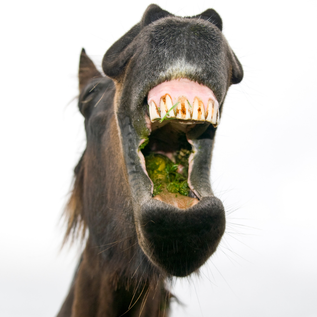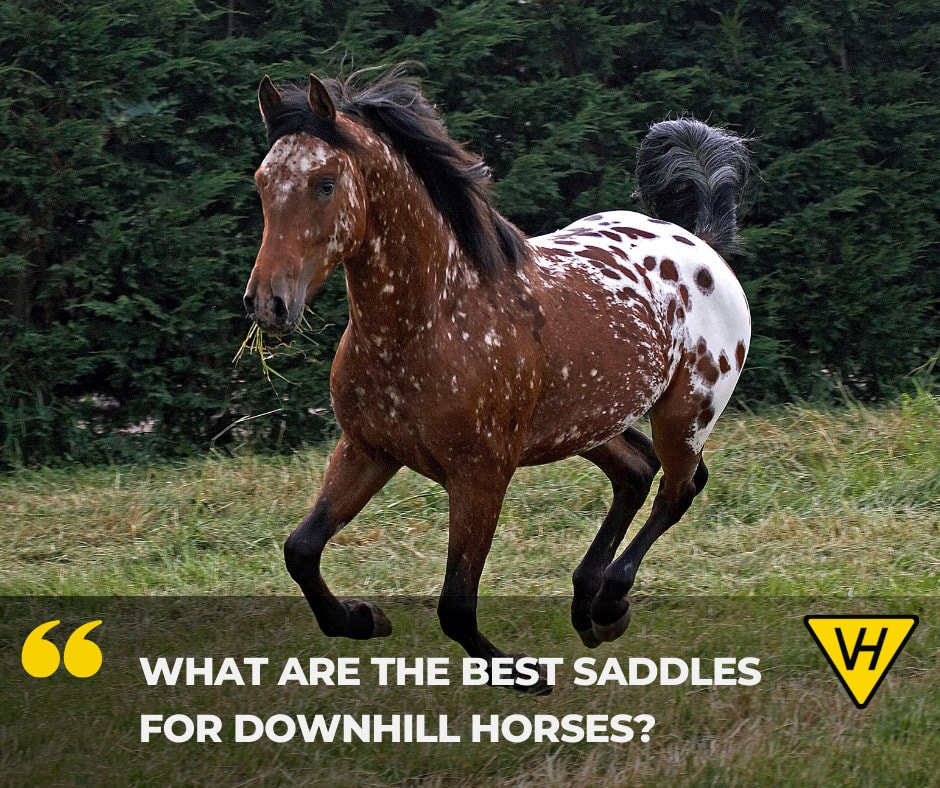|
Horses may be built downhill or may travel downhill. To confuse matters, some that are built downhill won't move downhill, yet some that are not built downhill will! Whatever the situation it can be somewhat challenging for the riders, but this needs not be the case!!!
A lot depends if the downhillness (for want of a better word!) is due to conformation, age, pain or training. Sometimes it is due to a combination of these and it is important to understand how each can be helped in different ways and how the horse's back and way of travelling can be expected to change in the future. Any choice of a saddle ideally should be able to accommodate these changes so will need a certain amount of adjustability. Mature horses with no underlying issues that are built downhill are relatively easy to fit. Saddle stability and balance is of utmost importance in these cases and Discovery saddles excell in this regard. As these horses most likely won't change a lot they are also great candidates for the custom made saddles by Fiona Cork Saddlery and Ryder Saddles. Obviously young horses will change but so will other horses through correct training and management. For example, horses that have been sore in their feet will change a lot in their gullet width requirement. We see this a lot with horses that have either been mildly laminitic, or those that have had negative palmar angles corrected through trimming or the use of pads. For these horses we always recommend saddles with adjustable gullets such as the Discovery saddles, Wembley Pro and Max Benz One. These saddles also have lovely panels for flock packing. Some of these horses will go from being downhill with no wither to engaging their pectoral sling and a completely different shape! Horses that have been sore in their backs can change shape not only in gullet width but also saddle platform length as a hollowed back will always measure shorter than one that is raised up and healthy. It is important to be able to identify back shape that is due to conformation and when it is due to pain and purchase a saddle that will fit the back as it should be and not as it is. Some horses are very stoical and often this is overlooked. To know how much a horse's shape will change due to training is a tricky one but with good communication between riders and saddlefitters about what the horse has been doing and what it will be doing in the future enables an estimation to be made. I try to keep my coaching, vetting and saddle work separate when blogging but sometimes it is not possible! If I put my coaching hat on for this topic it may offend some people to hear that the way they ride their horse could be contributing to their horse travelling downhill resulting in forward saddle slip. Two examples I see a lot is where horses are stretched down so much that they become experts in travelling on the forehand. I am all for stretching but not to the extreme sometimes seen. The other is where riders "ride" the saddles up their horse's neck in an attempt to "drive" their horse's hindquarters under. Sometimes they may not even be attempting to engage the horse much but it really doesn't take a lot of rein pressure with a stiff/strong seated rider to shunt some saddles forwards. If you are wondering if this could be possible in your case ride on a totally loose contact and see if your saddle moves. Soreness will affect the way horses move biomechanically. This is common in horses with low grade feet issues, uncomfortable saddles or hind-end lamenesses where the horse doesn't want to carry weight behind. The low-grade feet issues is the most common one we see here. These horses may or may not be big in condition but move downhill and their saddles slip forward over their shoulders. So a bit of detective work and a team effort is needed to find the perfect saddle for your horse if he/she is built or travels downhill but keep searching and an answer is out there! Try lots of different saddles, not just to see what works for your horse but also what helps your position and remember to ask for advice from experts in this area. Find a team of experts you trust and stick with them. Don't ask a million different people what worked for them as every horse and rider combination is unique in their requirements. That's why I love this game so much!
0 Comments
|
AuthorDr Victoria Hamilton is an icon in the Western Australian Equestrian Community, with a wealth of experience as a veterinarian, coach, breeder and international dressage competitor. As one of Australia’s top dressage riders, her love of horses is contagious and apparent in everything she does. Archives
February 2024
CategoriesFollow Us |
Photo from Sean MacEntee



 RSS Feed
RSS Feed